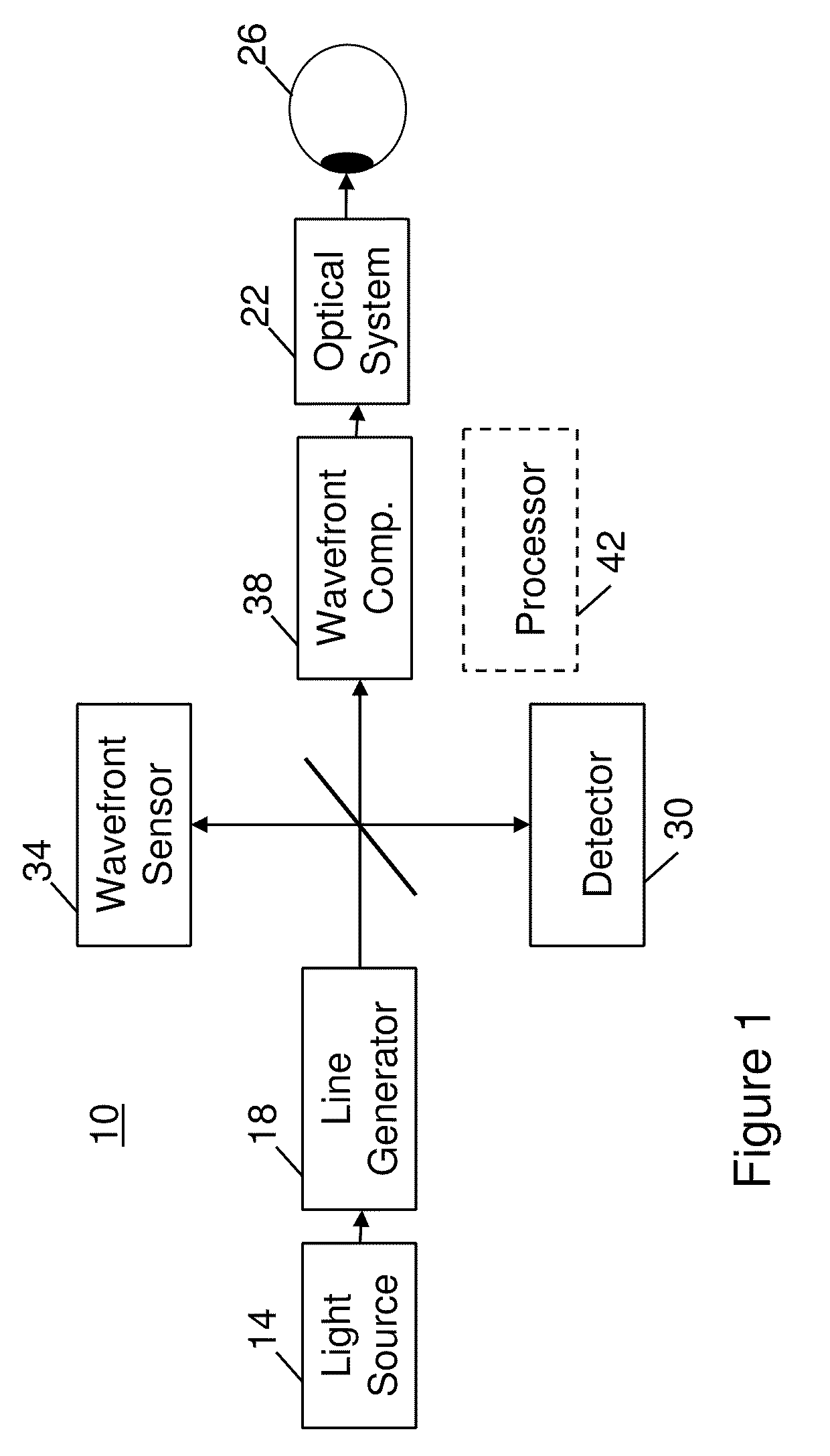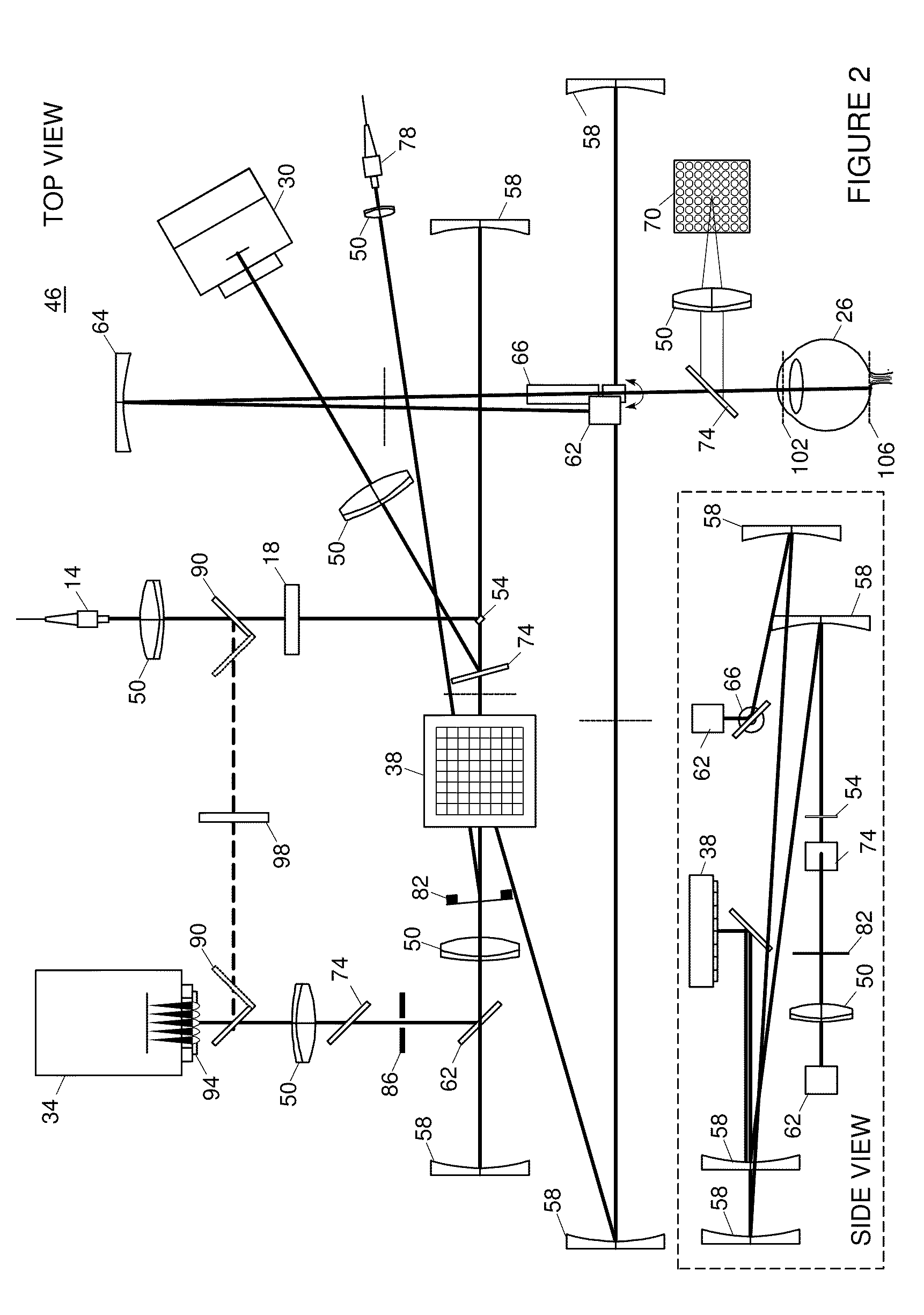Adaptive optics line scanning ophthalmoscope
a scanning ophthalmoscope and optic line technology, applied in the field of retinal or ocular imaging, can solve the problems of high cost of deformable mirrors and system complexity, and achieve the effect of advancing vision understanding
- Summary
- Abstract
- Description
- Claims
- Application Information
AI Technical Summary
Benefits of technology
Problems solved by technology
Method used
Image
Examples
Embodiment Construction
[0048]FIG. 1 shows an optical apparatus 10 including a source 14 of optical radiation and a line generator 18 (e.g., a cylindrical lens) configured to receive the optical radiation and to form the optical radiation into a line of light. An optical system 22 (e.g., a first optical module) includes a scanner and at least one focusing element (e.g., one or more mirrors, one or more spherical minors, one or more parabolic mirrors, one or more lens, or any combination of the aforementioned). The scanner is configured to scan a portion of an eye 26 with the line of light and to descan reflected light from the portion of the eye. The scanner and the at least one focusing element are configured to confocally provide output light in a line focus configuration. A linear array detector 30 is configured to detect the output light in the line focus configuration and to image the portion of the eye. A wavefront sensor 34 is adapted to detect an optical distortion, and a wavefront compensator 38 i...
PUM
 Login to View More
Login to View More Abstract
Description
Claims
Application Information
 Login to View More
Login to View More - R&D
- Intellectual Property
- Life Sciences
- Materials
- Tech Scout
- Unparalleled Data Quality
- Higher Quality Content
- 60% Fewer Hallucinations
Browse by: Latest US Patents, China's latest patents, Technical Efficacy Thesaurus, Application Domain, Technology Topic, Popular Technical Reports.
© 2025 PatSnap. All rights reserved.Legal|Privacy policy|Modern Slavery Act Transparency Statement|Sitemap|About US| Contact US: help@patsnap.com



